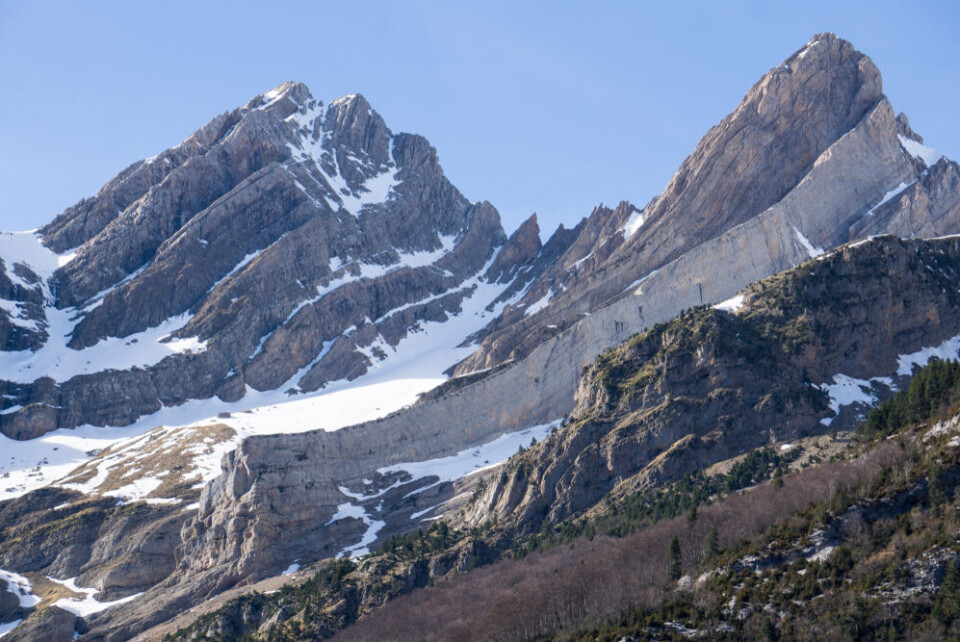-
Home and daily life: What's new in France in 2026
From tax declarations to postage price increases and a ban on cold calling
-
Travel and transport: What's new in France in 2026
Changes include new transport links and operator changes for popular routes
-
Six good news stories from France in 2025
From revolutionary eye surgery and sporting successes, to successful fundraising for iconic French brands, the year was full of feel-good news
Lack of snow hangs over school holiday ski season in Pyrénées
Ski stations are closing temporarily. Low snow levels also increase drought woes

France’s unseasonably warm January weather broke numerous heat records, particularly in the south, leading to an uncharacteristic lack of snow.
In the Pyrénées, temperatures have routinely been above 0C, even at altitudes significantly above sea-level, meaning little snow has settled even near the mountain peaks.
The small amount of snow which has settled quickly melted away, leaving people in the Pyrénées-Orientales with two looming fears: a continuation of the drought crisis, and a lack of snow for the income-boosting ski season.
It is unlikely that ski stations will be replenished with enough snow before the first of the school holidays start on February 10, and some have already shut down for the upcoming ski season.
How hot has it been?
The overall January heat record – which just about remained intact this year – is 25C, recorded in Perpignan (Pyrénées-Orientales) in 1944.
However, temperatures in the department passed 20C – which usually notifies the end of winter – on January 20, far earlier than usual.
High up in the mountains, at the Pic du Midi weather observatory 2,880 metres high, the warm weather’s effects are clearly noticeable, even if temperatures did not quite reach 20C there.
“An unprecedented series of six consecutive frost-free days was recorded from January 24 to 29,” at the site, said Météo France.
“Frost-free sequences in January had never exceeded three days in a row," it added, with a three-day streak only ever happening before in 1971, 2002 and 2007.
In the neighbouring Ariège department, a 24.6C was recorded over 1,000 metres above sea level, 5C higher than any previous January recording.
These conditions are set to last, with Météo France not expecting a change in situation at the beginning of February, and the chances of significant snowfall returning become slimmer each day as spring approaches.
Read more: ‘Face the reality’: France ‘must prepare’ for +4C global warming
Lack of snow means lack of skiing
The almost total lack of snow on the usually white-capped mountains is leading to many ski resorts temporarily closing their doors.
These include Artouste, Gavarnie-Gèdre, Camurac, Le Chioula, and Nistos.
One resort, Hautacam, which has closed its ‘Nordic’ skiing area but kept other activity space open, even jokingly referred to itself as ‘Hautacam plage (beach)’ on social media, offering deck chairs and barbecues to guests.
It is unlikely that snow will return in enough quantity before the beginning of the school holidays, which start on February 10 for many children, for pistes to reopen.
Ski website skiinfo currently predicts that no station in the Pyrénées will be able to open all of the pistes on their premises, even with the aid of synthetic snow from snow guns.
This will inevitably leave a massive dent in the economy of a department largely driven by tourism – pre-pandemic figures state tourism contributed €1.4 billion to the local economy each year and employed 11,000 people in the area.
Drought crisis deepens
It is not only winter tourism but also summer tourism – and the daily lives of local residents – that will be impacted by the lack of snow.
Melted winter and spring snows from the Pyrénées usually replenish water tables in the area, the last large influx of water before a summer season that is usually very dry.
Despite plentiful rain that replenished nearly all of France’s underground water reserves at the end of 2023, the Pyrénées-Orientales department is still facing critical water shortages, and the lack of replenishment from melted snow will only worsen the situation.
In 2023, only 250mm of rain fell in the entire year, less than half the annual average.
Today (January 30) the department’s prefect is hosting a meeting on how the department can best manage dwindling water reserves.
Plans to conserve supplies include a drive to repair leaky water infrastructure, stricter regulations on water usage and drilling by agriculturalists, and the use of recycled wastewater.
Another factor is a push towards reducing water consumption in the department, which fell by 30% in 2023.
Measures may have to get stricter, however, before improvements are seen, particularly if there is no more snow this year
Related articles
What is France's 'drought' website VigiEau?
Irish teen lost in French Alps wearing shorts and t-shirt found safe
























